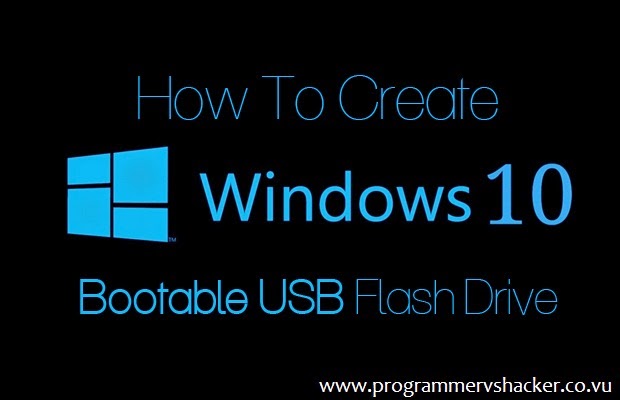With the official launch of Windows 10 on January 21st 2015, Microsoft had already released the technical preview of Windows 10 OS which gives the experience of what new features it will bring to the users. There are lots of features expected; one of the highlights is new start menu, while other changes could be more sleek and modern windows with also touch friendly and more powerful with keyboard and mouse.

All new features may seem tempting to use the latest version, especially when the upgrade is not too far. So, if you are looking to take a plunge into this new version and test the technical preview without going into virtualization, you may already know that the best option is to go for bootable USB drive. Here we have given the below requirements and steps to create Windows 10 Bootable USB drive.
Requirements
In order to create the bootable drive; you need to prepare the following things:
- Download a Windows 10 ISO image (From our official Download Link)
- Install Archiving tool like WinRAR
- USB drive with minimum 4 GB capacity for 32 bit version and 8 GB for 64-bit version. It is better that you have
- One Windows PC.
How to Create Bootable USB Drive
Before starting with the steps to create bootable USB drive, you need to extract the contents of the Windows 10 ISO files to your Windows PC. Also remember that you have enough space in the PC drive in order to accommodate the additional content. Also ensure that you have backup of the files in your PC before starting with creating of Bootable drive. After this you need to attach the USB drive (4GB or 8 GB) to your PC and follow the below steps.
- Open command prompt window and type “cmd” and hit with OK button.
- Use the command diskpart command to start the disk partitioning software.
- Use the command listdsk to view the list of physical storage media currently. It will list the HDDs, SSDs and USB drives.
- Now the check disk number of the USB drive
- Use “select disk <USB disk number>” command to select the drive.
- Use clean command to erase the contents of the drive. Now use command “create partition primary” to create a new primary partition of the USB drive. Go ahead with selecting the partition using “select partition 1”.
- Now use command “active” to make the partition active or validated.
- Now use the command “format fs=ntfs quick” to format the partition as NTFS.
- Now enter the command “assign” to assign eh letter to the drive.
- Now copy the extracted contents of the Windows 10 ISO to the US drive.
How to start the installation
To kick off the installation from the bootable DVD, you need to alter the BIOS settings to boot the system from the USB drive. You can trigger the boot menu while turning on the PC and then manually select the USB drive. After setting the USB drive as higher priority, you can easily install Windows 10.
Conclusion
This was all about the guide which you may use to create Windows 10 Bootable USB Flash Drive. If you have any kind of question or confusion left then do let us know. Any of our team member will get back to your queries as soon as possible. Furthermore, don’t forget to share this article with your other friends and circle too.


 About
About Tags
Tags Popular
Popular




0 comments:
Post a Comment
We’re eager to see your comment. However, Please Keep in mind that comments are moderated manually by our human reviewers according to our comment policy, and all the links are nofollow. Using Keywords in the name field area is forbidden. Let’s enjoy a personal and evocative conversation.